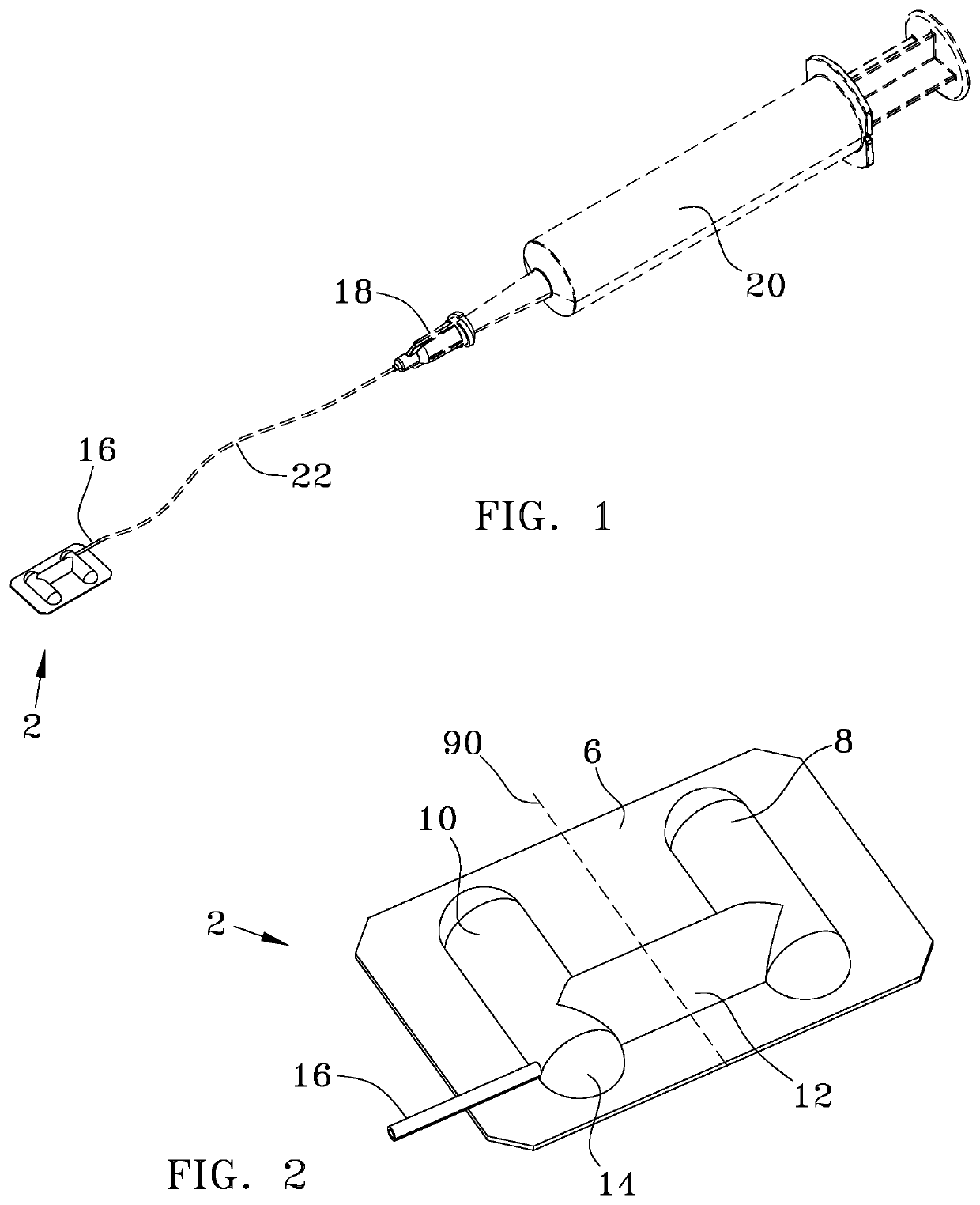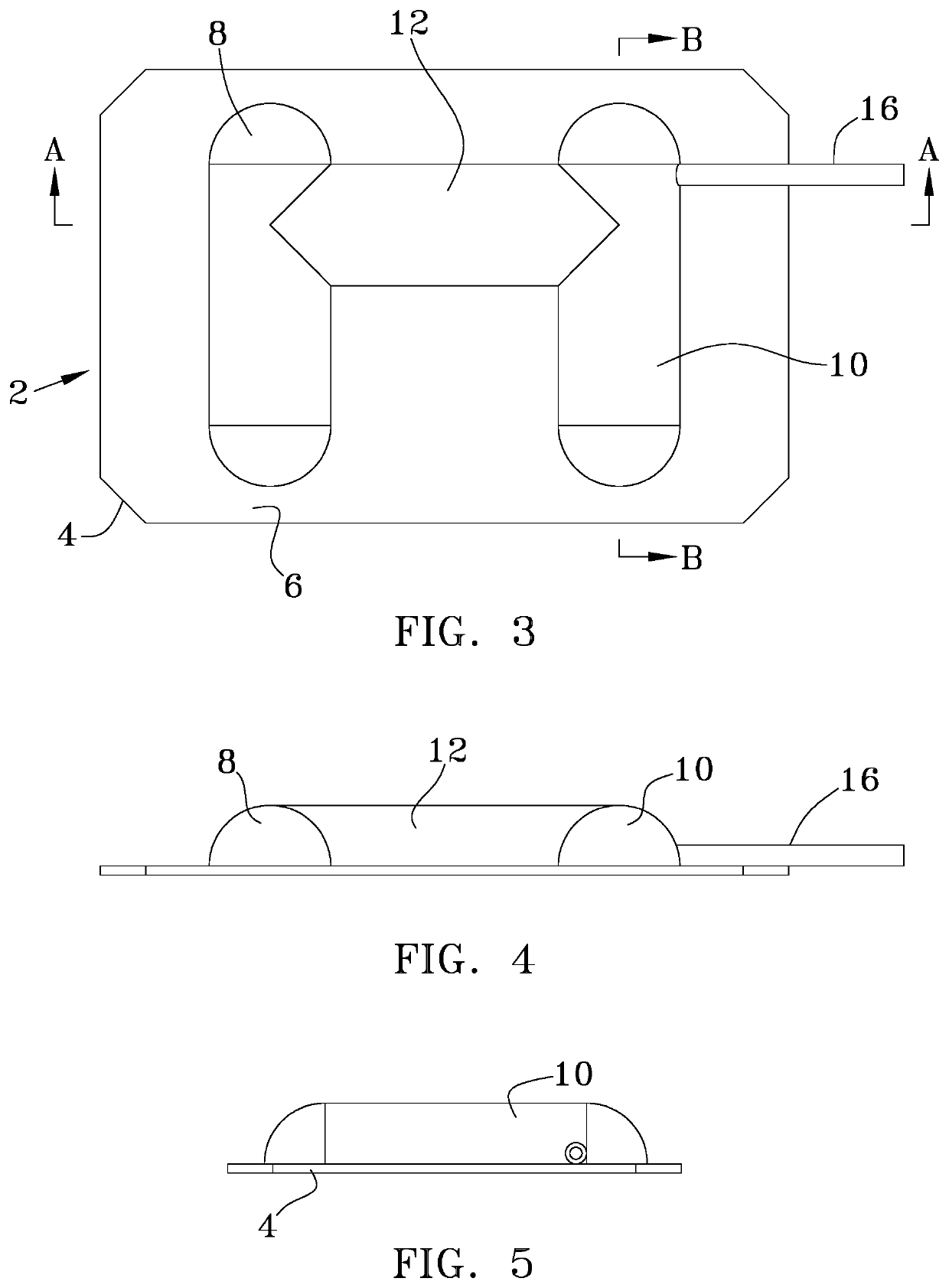Inflatable Tooth Dam
a tooth dam and inflatable technology, applied in the field of dental implants, can solve the problems of band clamps being uncomfortable, job complexity goes up, complications down the road, etc., and achieve the effect of a single use, inexpensive, tooth dam
- Summary
- Abstract
- Description
- Claims
- Application Information
AI Technical Summary
Benefits of technology
Problems solved by technology
Method used
Image
Examples
first embodiment
[0040]Looking at FIGS. 2 and 6 of the first embodiment matrix 2, it can be seen that the device is made of a cut-able flexible, planar panel 4 of a first thickness that has polymer film 6 of a second, thinner thickness, affixed to its panel's back face. The polymer film6 is shaped into first and second substantially similar linear air bags (linear air pockets between the panel 4 and the inner side of the polymer film 6) 8, 10 connected by an air channel 12. In the specific geometric configuration used in the preferred embodiment matrix 2, the air channel 12 is located transverse to the longitudinal arrangement of the air bags 8 and 10, intersecting them perpendicularly. While this geometric arrangement has tested well it is known that other geometric configurations of air bags 8, 10 such as square, rectangular or round will work. The height of the air bags 8, 10 is slightly larger than the height of an average human molar or premolar.
embodiment 2
[0041]Looking at FIGS. 3-10, it is illustrated that the air bags 8, 10 have ¼ spherical ends 14, again that may have other configurations depending on changes in fabrication tooling. Extending from one of the air bags (in the illustrated embodiment the second air bag 10) is an inflation conduit 16. In the preferred embodiment 2 the inflation conduit 16 extends beyond the extent or the peripheral edge of the panel 4. Looking at FIGS. 11 and 12 it can be best seen that the inflation conduit 16 extends and is sealed at the entry to the second air bag 10. (In the alternate embodiment matrix 50 (FIGS. 13 and 14) the inflation conduit 16 is replaced by an inflation channel 52 that is a linear section of the panel 4 that formed as a raised semi-circular passage that has its proximal opening at the top edge of the panel 4 and its distal opening in the tunnel 12, between the panel 4 and the polymer film 6). The inflatable height of the air bags 8, 10 and air tunnel 12 are identical. All thre...
PUM
 Login to View More
Login to View More Abstract
Description
Claims
Application Information
 Login to View More
Login to View More - R&D
- Intellectual Property
- Life Sciences
- Materials
- Tech Scout
- Unparalleled Data Quality
- Higher Quality Content
- 60% Fewer Hallucinations
Browse by: Latest US Patents, China's latest patents, Technical Efficacy Thesaurus, Application Domain, Technology Topic, Popular Technical Reports.
© 2025 PatSnap. All rights reserved.Legal|Privacy policy|Modern Slavery Act Transparency Statement|Sitemap|About US| Contact US: help@patsnap.com



